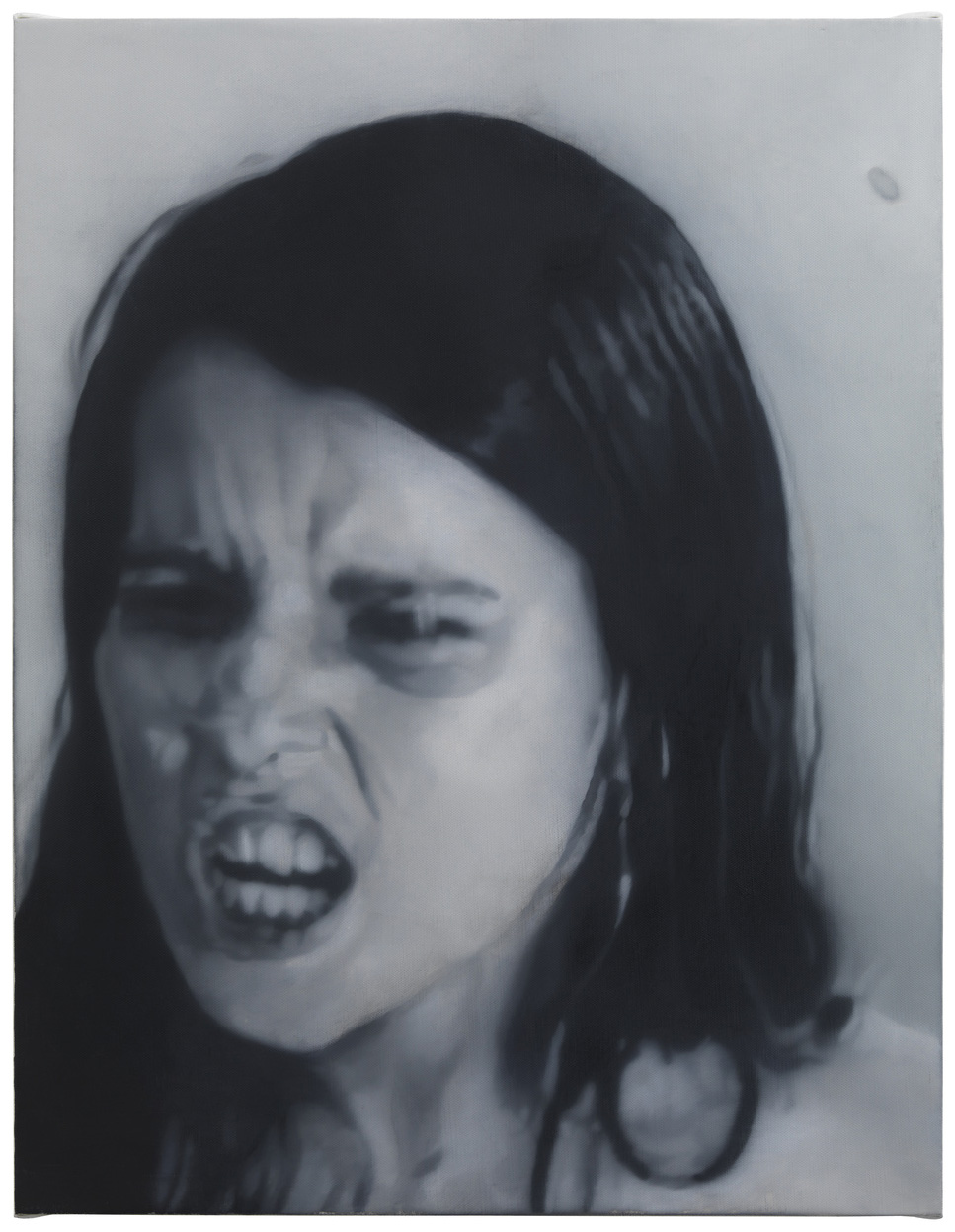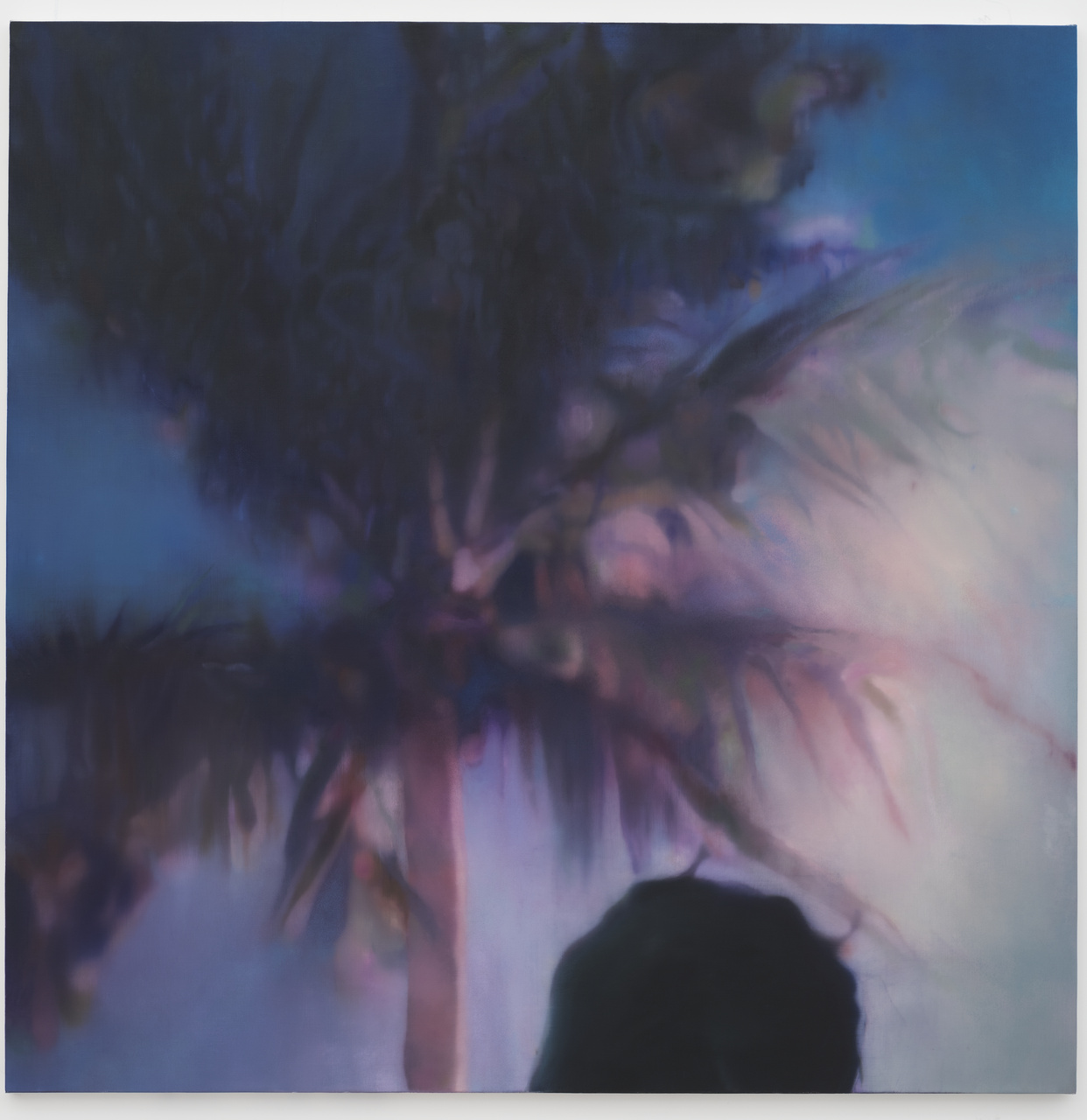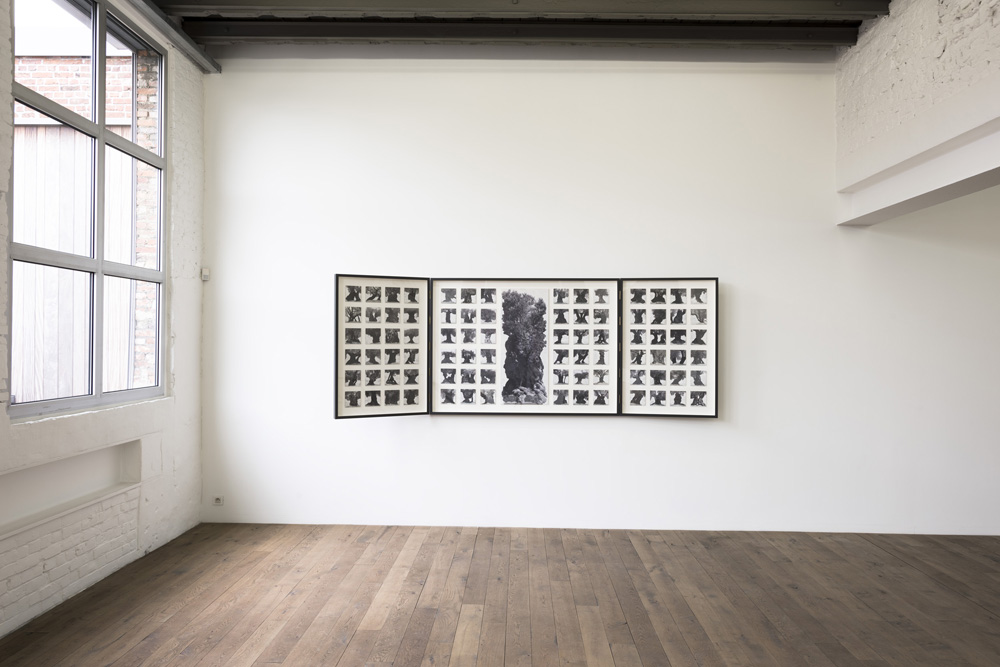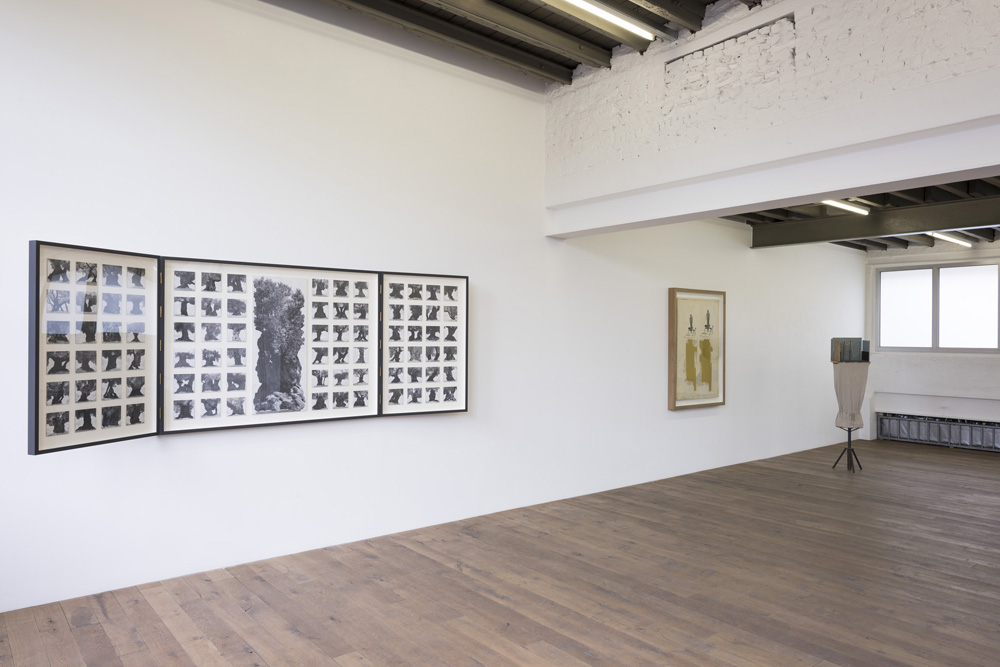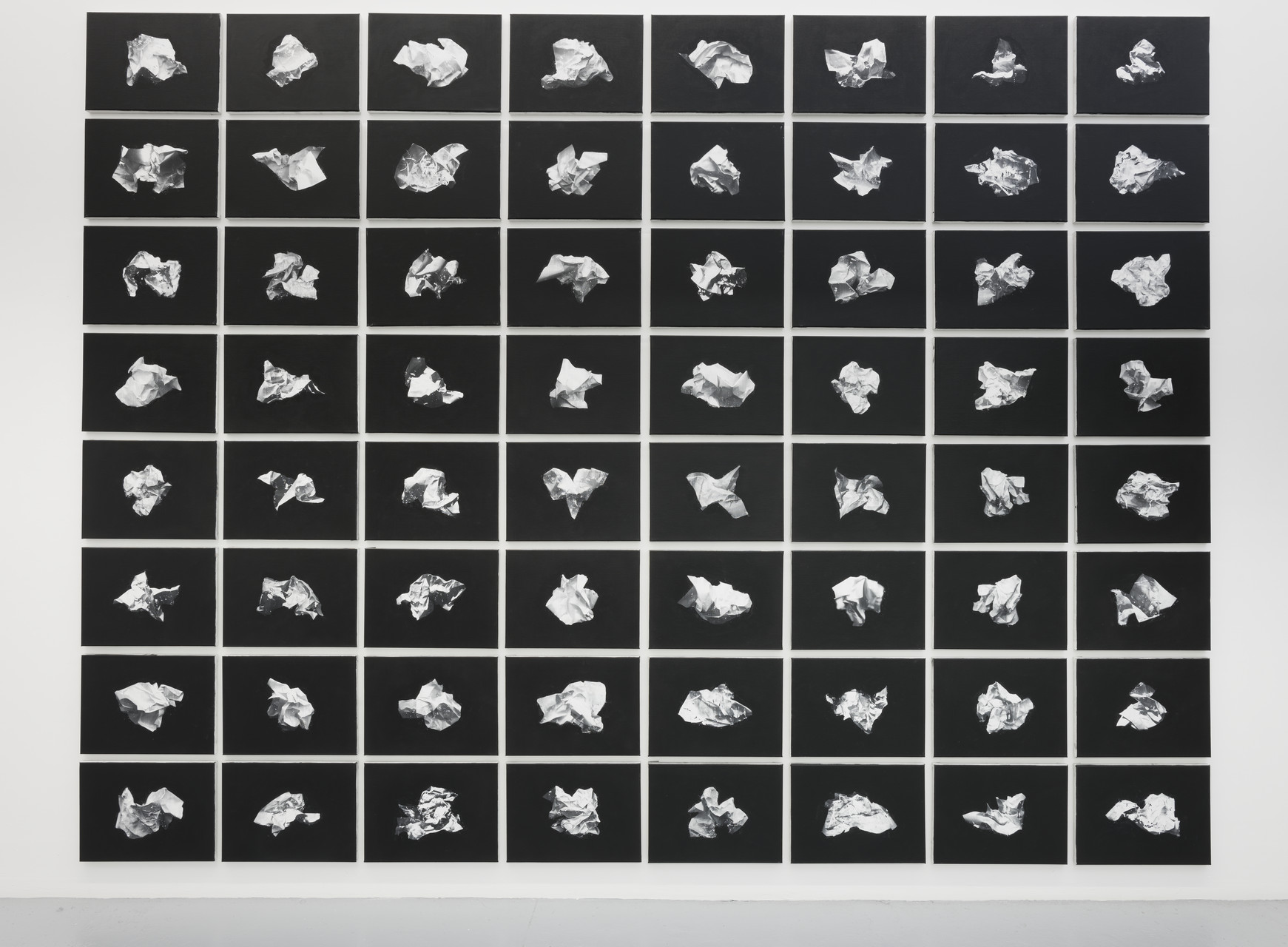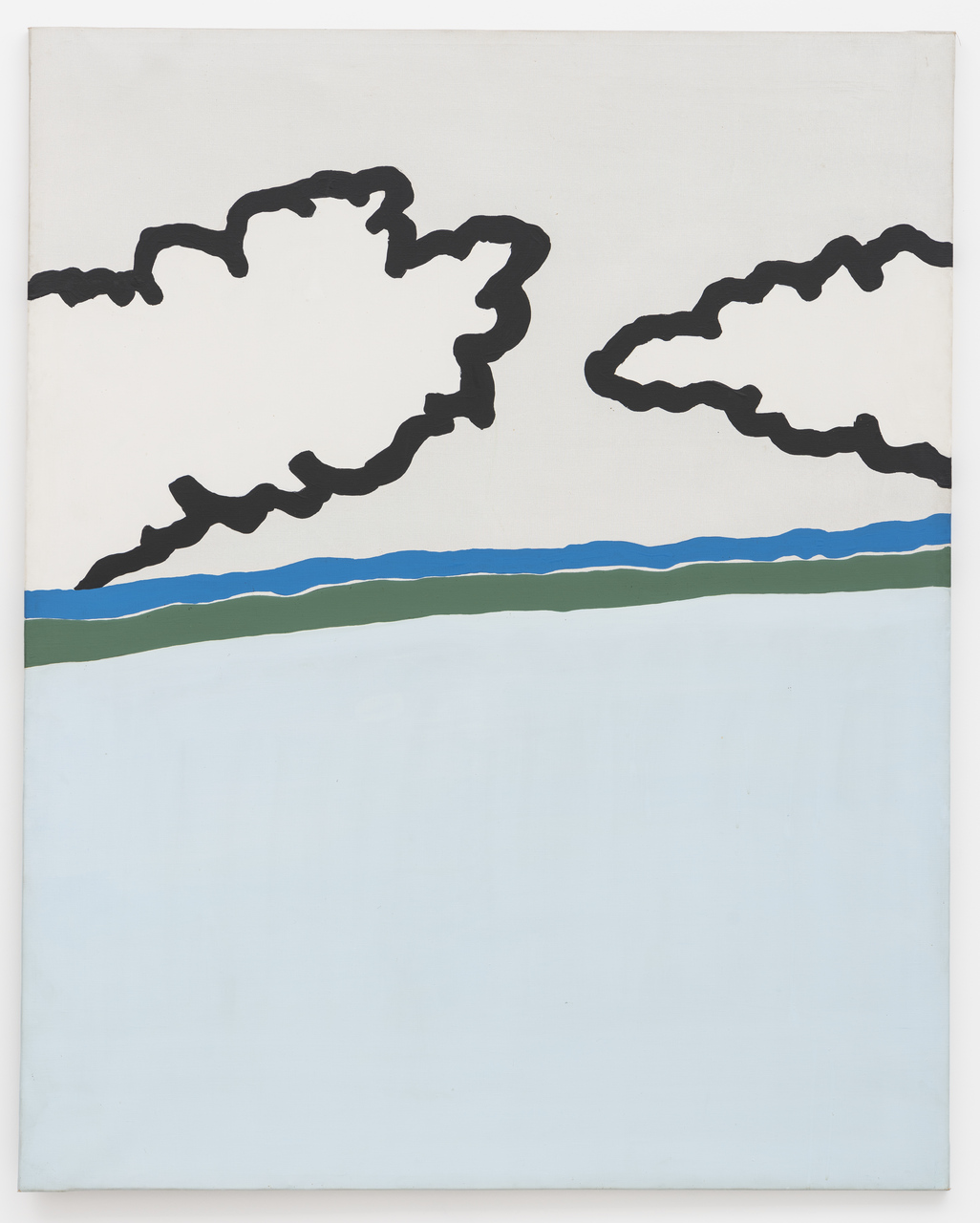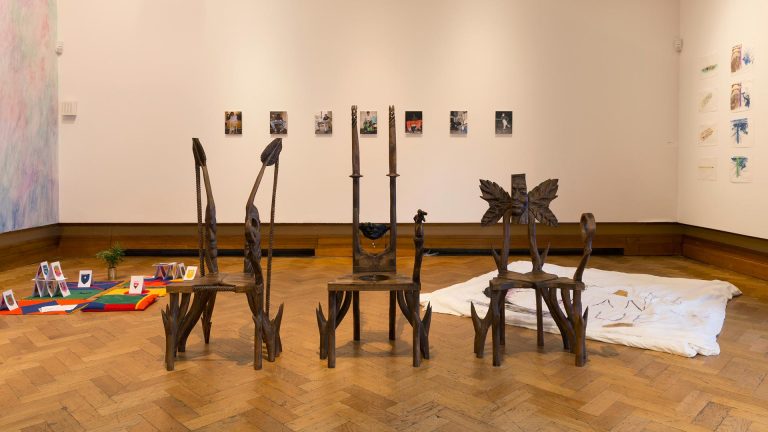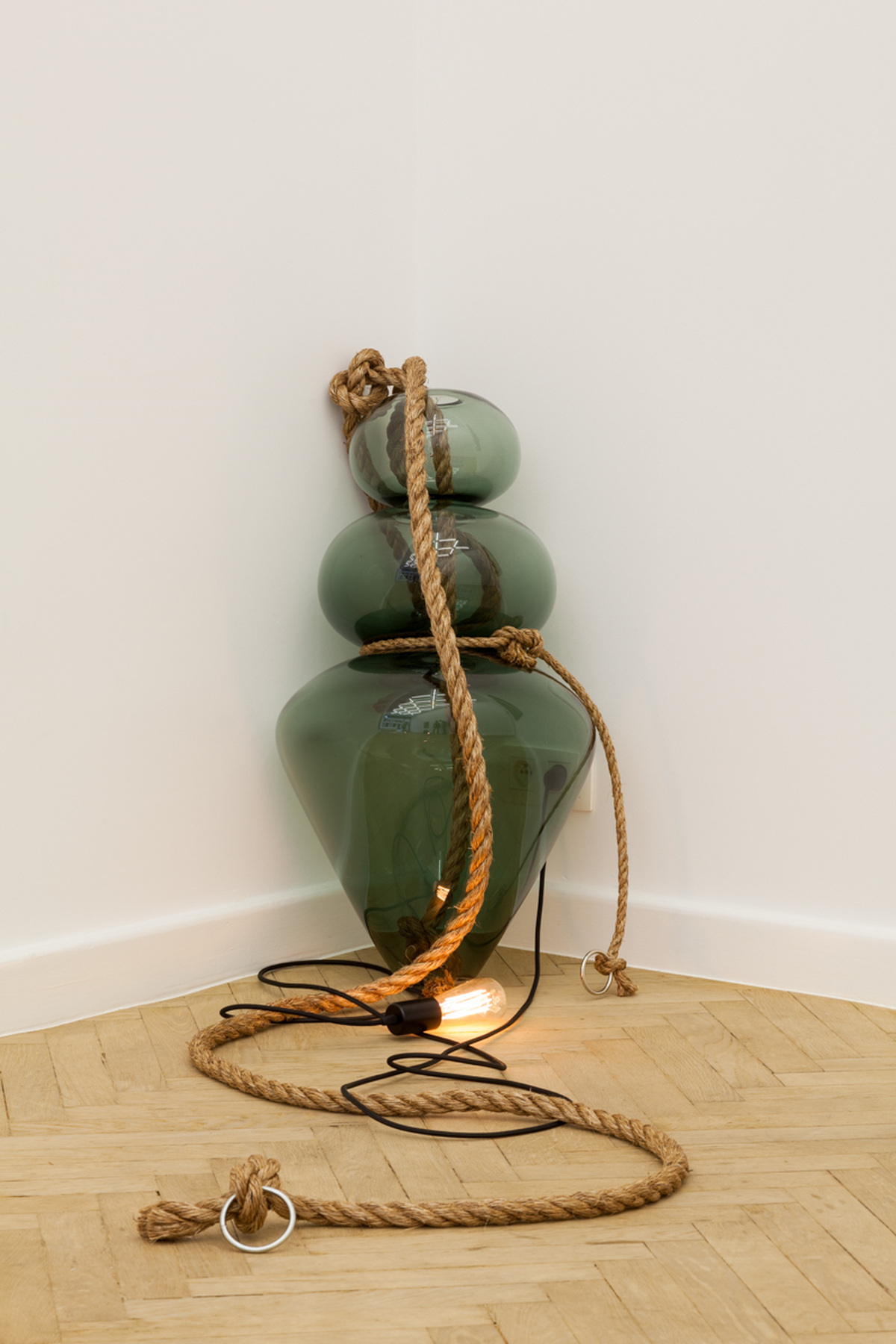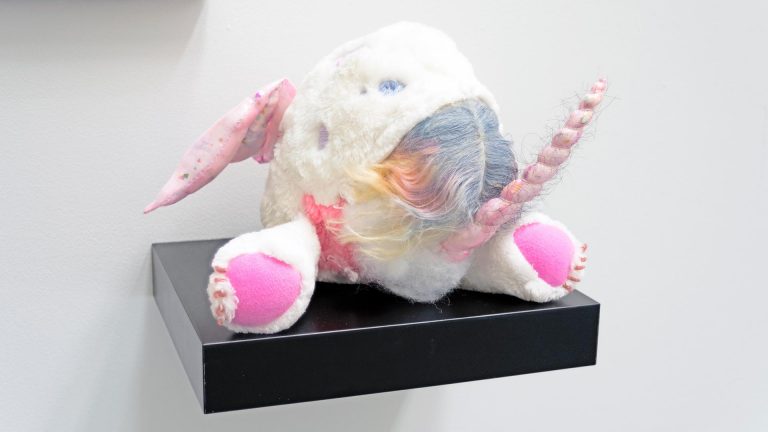Artists: Raoul De Keyser, Johannes Kahrs, Mark Manders, Mircea Suciu, Patrick Van Caeckenbergh
Venue: Zeno X Gallery, Antwerp, Belgium
Date: April 29 – June 27, 2015
Photography: images courtesy of the artists and Zeno X Gallery
Raoul De Keyser (b. 1930 – 2012, BE)
Kanovaren (Canoeing) (1967) is a work typical of Raoul De Keyser’s early period. Especially in the late sixties and early seventies, De Keyser manifests a pronounced preference for scenic, even ‘impressionistic’ motifs such as clouds, banks and grassy areas, as is evident in Kanovaren. In the works of De Keyser, these kinds of ephemeral motifs become fixed and compact. The work builds a bridge between Minimalism and Pop Art, yet still refers to a personal frame of reference. A motif that repeatedly appears from the beginning of the 80s, is the bow of a canoe, as is the case in the series ‘Zinkend’. In Zinkend (Sinking) (1983), the tapered silhouette of the bow is easily distinguishable, while both the suggestion of the moving boat and the flowing water remain clearly visible. The objective, almost ascetic character of De Keyser’s work from the 70s is abandoned in favour of a higher level of expression and compositional complexity. Het niets aangenaam gevuld met weinig (The nothing pleasantly filled with little) (1971) is an early work of Raoul De Keyser. The ‘Nieuwe Visie’ (New Vision) replaced the garish signs of consumption of American Pop Art with the quieter imagery of the Flemish village. Everyday objects, such as the soccer sock, repeatedly reappear and are used to investigate line, surface and colour.
Johannes Kahrs (b.1965, DE)
For several years, the German painter Johannes Kahrs has been expanding his palette toward a more nuanced and brighter spectrum. The drama now seems to enfold in broad daylight. Kahrs eschews the narrative in his images but does seek to arouse the personal memory of the viewer. The paintings are always based on photographs or film stills he collects. He isolates characters and objects, creating, in this way, a whole new context and atmosphere. Johannes Kahrs will present a solo exhibition at both FRAC Ile-de-France and Zeno X Gallery in the spring of 2016. He has also been selected for the Lyon Biennale, which starts in September.
Mark Manders (b.1968, NL)
All the works of Mark Manders are strongly linked, both in a visual and a subject-related manner. He metaphorically describes his work as ‘Self-Portrait as a Building’. In a statement about the work Shadow Study, the artist says: “A few times a day there is a cup very close to my upper leg bone, and I slowly discovered that if you turn an empty cup upside down a shadow falls out of the cup, falling upon my leg. I wanted to keep this shadow, have it and own it, so I turned it into an image.” In September, he participates in the group exhibition ‘A Brief History of the Future’, held in the Louvre. Currently, his work is on view in ‘Sculptures also Die’ at Palazzo Strozzi, Florence, curated by Lorenzo Benedetti.
Mircea Suciu (b.1978, RO)
The drawing installation Notes On Disappointment brings together the unsuccessful sketches of the artist. Suciu photographed crumpled studies and then copied the photos in paint. By ‘destroying’ certain sketches, he takes away the possibility of them ever becoming a work of art. In this way, however, the artist does integrate them into his oeuvre. The work is in line with Suciu’s interest in serial work. It allows him to exhaustively work on a certain image until he reaches its essence or manages to place it in a different perspective. Mircea Suciu presented his first solo exhibition at Zeno X Gallery in January 2015. In June 2015 he will have a solo show at the National Museum of Contemporary Art in Bucharest.
Patrick Van Caeckenbergh (b. 1960, BE)
De Duizendjarige Olijfboomgaard (The Thousand-year-old Olive Grove) is a monumental triptych by Patrick Van Caeckenbergh. This work is connected to his ‘Tree Drawings’, which he showed at, among other venues, the Venice Biennale in 2013. Van Caeckenbergh sees trees as a natural form of architecture with anthropomorphic forms and a very special power. The drawings are always based on existing trees to which the artist adds imaginary parts. He sees the drawings as musical scores that can be improvised upon. As from now, Patrick Van Caeckenbergh is also represented by Lehmann Maupin Gallery. His first solo exhibition will be held in New York in late June. In September 2015, the artist will present a solo exhibition at Zeno X Gallery.
Johannes Kahrs, Untitled (angry girl) (part 1), 2013
Johannes Kahrs, Untitled (angry girl) (part 2), 2013
Johannes Kahrs, Untitled (dark palm), 2014
Mark Manders, Collage with Fake Newspapers, 2012
Mark Manders, Figure Study, 1997-2013
Patrick Van Caeckenbergh, The Thousand-year-old Olive Grove, 2013-2014
Mircea Suciu, Notes on disappointment, 2013
Mark Manders, Shadow Study, 2012
Raoul De Keyser, Het niets aangenaam gevuld met weinig, 1971
Raoul De Keyser, Kanovaren, 1967
Raoul De Keyser, Zinkend, 1983



